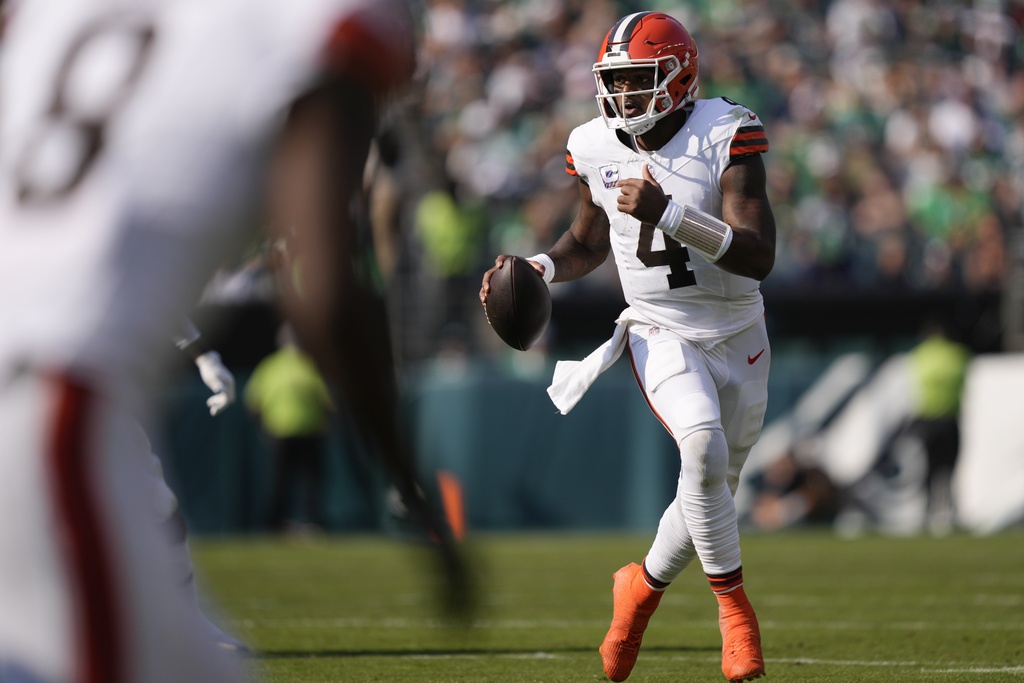Cleveland Browns to Relocate to Brook Park Dome by 2028 \ Newslooks \ Washington DC \ Mary Sidiqi \ Evening Edition \ The Cleveland Browns have announced plans to leave their lakefront stadium by 2028, moving to a $2.4 billion domed facility in Brook Park. Despite efforts from Cleveland city officials to retain the team, the Haslam family decided relocation was the best long-term option. The team aims to fund the project through a public-private partnership while working to improve both their on-field performance and fan experience.
Cleveland Browns Plan Dome Move to Brook Park Quick Looks
- The Browns will leave their 25-year-old lakefront stadium in 2028, moving to a domed complex in Brook Park.
- Owners Jimmy and Dee Haslam chose to relocate after evaluating renovation options and potential sites.
- The new $2.4 billion facility aims to attract large events and year-round activity, benefiting the region’s economy.
Deep Look
The New Facility
The new stadium, a $2.4 billion domed facility located 12 miles south of downtown Cleveland in suburban Brook Park, will serve as the centerpiece of a larger entertainment complex. The Browns’ owners, Jimmy and Dee Haslam, explored various options, including renovations to the current FirstEnergy Stadium, but ultimately decided that building a new facility was the best long-term solution.
In a statement, the Haslams explained that maintaining the current stadium would only provide a temporary fix and would not solve operational challenges. “We’ve learned through our exhaustive work that renovating our current stadium will simply not solve many operational issues and would be a short-term approach,” they said. Additionally, the owners emphasized the importance of a dome in attracting large-scale events and maximizing the venue’s year-round potential. “Without a dome, we will not attract the type of large-scale events and year-round activity to justify the magnitude of this public-private partnership,” they added.
Funding and Economic Impact
The funding for the $2.4 billion project is still being worked out. The Browns are proposing a public-private partnership and have suggested using bonds to cover the public portion of the funding. However, the specifics of how much the public will be asked to contribute remain unclear.
Last month, the city of Cleveland offered to fund $461 million for upgrades to the current stadium, splitting the cost with the Browns to redevelop the lakefront property. Mayor Justin Bibb had hoped the city’s proposal would keep the team in its downtown location, but the Haslams’ decision has quashed those hopes.
The Browns believe the new facility will bring significant economic benefits to the region, offering opportunities far beyond what the current stadium can provide. “The transformational economic opportunities created by a dome far outweigh what a renovated stadium could produce with around ten events per year,” the Haslams said. The new stadium is expected to host year-round events, including concerts and sports tournaments, which could generate more consistent revenue for the region.
Cleveland’s Disappointment
Cleveland Mayor Justin Bibb expressed his disappointment over the team’s decision to move, acknowledging that efforts to reach a deal to keep the team downtown had fallen short. “As mayor, I will always prioritize the needs of residents and businesses,” Bibb said. He highlighted the importance of balancing city resources to address the housing and infrastructure needs of Cleveland residents, implying that committing significant public funds to the stadium upgrade may not have been feasible.
“The Haslam Sports Group may want a roof over their heads, but my responsibility is to ensure that Cleveland residents have a roof over theirs,” Bibb stated. The mayor acknowledged the complexities of making such decisions, given the city’s “finite resources,” and reiterated his focus on the practical needs of the community.
Browns’ Stadium History
The Browns’ current stadium has been their home since 1999, when the team returned to the NFL as an expansion franchise following the controversial relocation of the original Browns to Baltimore by then-owner Art Modell. FirstEnergy Stadium was built as part of a deal to bring the team back to Cleveland, and the stadium has hosted countless games since, despite mixed results on the field. The decision to leave this venue represents a major shift for the franchise.
The timing of the announcement adds to the turmoil surrounding the Browns, who are currently in the midst of a four-game losing streak and hold a disappointing 1-5 record ahead of their upcoming home game against the Cincinnati Bengals. While the team continues to struggle on the field, the Haslams emphasized their commitment to improving the fan experience and enhancing the team’s future success.
“We understand this is a complex process with more questions still to be answered, and we will continue to communicate openly as our process evolves,” the Haslams said. “It is critical that we remain committed to the best long-term, sustainable solution for our stadium and to providing the world-class dome experience our fans deserve.”
The Road Ahead
As the Browns prepare for their eventual move to Brook Park, there are still many logistical details to work out, including finalizing funding for the project and planning the transition to the new stadium. Meanwhile, the team will continue to play at FirstEnergy Stadium through the 2027 season.
Though the move marks the end of an era for the Browns and their lakefront home, the team’s future in Brook Park holds the promise of a more modern, versatile venue that could elevate both the team’s prospects and the region’s economy for years to come.







